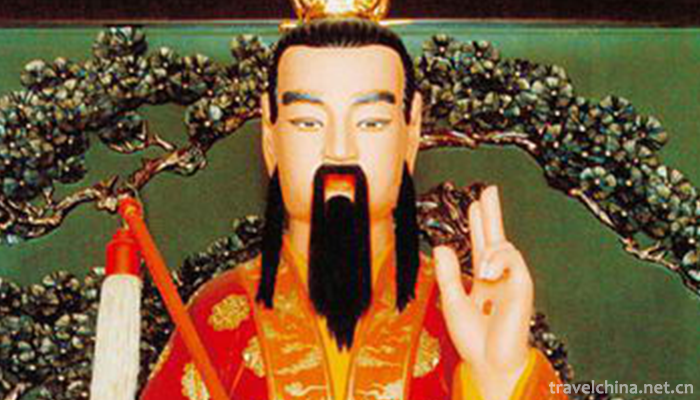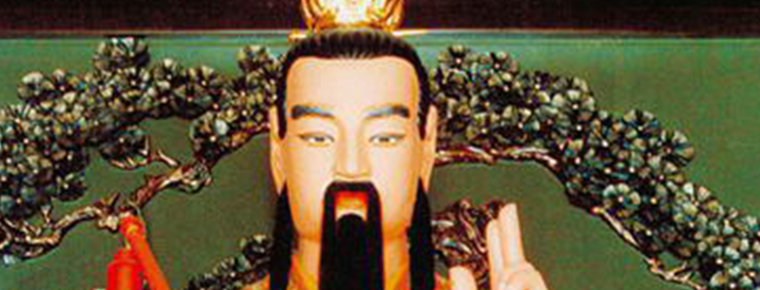The legend of Huang Daxian in Huangchuping
The legend of Huang Daxian in Huangchuping
Huang Chuping's legend is one of the local folklores in Jinhua, Zhejiang Province. It originated in the Eastern Jin Dynasty. The earliest written record was in The Biography of Immortals written by Ge Hong, a famous Taoist theorist in the Eastern Jin Dynasty. Its legend originated from Huang Chuping, a historical figure. Huang Chuping, Jin Chengdiwei and three years (AD 328) were born in Huanglu Village, Lanxi City. On June 7, 2008, the legend of Huang Daxian was approved by the State Council to be included in the second batch of national intangible cultural heritage list.
Historical origin
The legend of Huang Da Xian originated in the Eastern Jin Dynasty. The earliest written record is the biography of immortals written by Ge Hong, a famous Taoist theorist in the Eastern Jin Dynasty. Its legend originated from Huang Chuping, a historical figure. Huang Chuping, Jin Chengdiwei and three years (AD 328) were born in Huanglu Village, Lanxi City. Huang Chuping was smart and intelligent, kind-hearted, diligent and handsome. His brothers and parents died when they were young, and their families were poor. He began to cultivate vegetables diligently. His brother Huang Chuping cut firewood and herd sheep. They depended on each other for their lives. When Huang Chuping was 15 years old, he went up to the goats to herd sheep. When he met Tian Shennong, a Taoist monk, the rain teacher, Chisongzi, who "loved his conscience", took him to the Yinshi Cave of Jinhua Mountain to learn Taoism and practice. Huang Chuping got Taoism and Immortality in Beishan. Later, the stories of "knocking stone into sheep", practicing morality, punishing evil and helping the good, eliminating evil for the people and rewarding good for the people slowly spread among the local people in Zhejiang, leaving many beautiful legends. The legends about Huang Daxian include the legends of Huang Daxian's life story, natural landscape, human landscape, folk customs, local products, and the legends of Huang Daxian's apparition. There are a lot of legends about Huang Daxian in Lanxi, Jinhua, Hong Kong, Macao and Southeast Asia. There are also some sites such as Huang Daxian's former residence, Erxianjing, Jinhua Guan, Chisong Pavilion and Erxianqiao in Lanxi and Jinhua. In Hong Kong, Macao and Southeast Asia, Daxian Taoism is also worshipped, with a vigorous incense and enduring years.
Forms of expression
"The legend of Huang Daxian" has been widely recorded in Taoist scriptures of all dynasties; oral transmission among the people; praise of ancient emperors; reproduction of poetry and paintings by literati of all dynasties; record of historical books, local chronicles and similar books and dictionaries; dissemination of literary and artistic forms such as Quyi, Wuju opera and TV, etc.
Inheritance significance
The legend of Huang Da Xian has a long history, and it has a history of more than 1600 years. It is widely spread not only throughout the country, but also in the United States, Canada, France, Australia and Southeast Asia. It has a high degree of popularity. Its essence is "promoting good and punishing evil, helping the poor and alleviating poverty". It reflects the common pursuit of truth, goodness and beauty, and reflects the demands and aspirations of the people. Cultural forms are rich and varied. There are many palaces, temples and relics at home and abroad in material forms, as well as intangible cultural relics such as ancient and modern literature and art.


-
1.Jingming Hot Spring Resort
Jingming Hot Spring Resort is the largest resort in China. It is located in Jingxi Garden Town, Jiexi County, Jieyang City, Guangdong Province. It is built by Shenzhen Anyuan Investment Group Co., Ltd
Time 2018-12-22 -
2.Nanjiang Grand Canyon
Nanjiang Grand Canyon is located in Kaiyang County in the middle of Guizhou Plateau, 54 kilometers away from Guiyang, the capital of Guizhou Province
Time 2018-12-31 -
3.Qinghai Kekexili National Nature Reserve Hoh Xil
The Kekexili National Nature Reserve in Qinghai Province is located in the western part of Yushu Tibetan Autonomous Prefecture with a total area of 4.5 million hectares
Time 2019-01-29 -
4.Subashi Buddhist Temple Site
Subashi Buddhist Temple Site , also known as Zhaohuili Temple, is located in the south foot of the Queletag Mountains in the northeast of Kuqa County, Xinjiang. It is a national key
Time 2019-02-13 -
5.Xue Xiang Snow Township
Snow Township, the full name of "China Snow Township National Forest Park", is located in Changting Town, Hailin City, Mudanjiang City, Heilongjiang Province, China, and belongs to the Dahai
Time 2019-02-27 -
6.Ginseng Chicken Hotpot
Wash ginseng, boil it in a little water, take out slices, and cook it in the original pot for 15 minutes. Still soak it in the original soup. All the above ingredients except hen nuggets and ginseng s
Time 2019-03-24 -
7.Hu Qingyutangs Traditional Chinese Medicine Culture
Hu Qingyutang's traditional Chinese medicine culture is one of the national intangible cultural heritages and the traditional trade customs preserved by Hu Qingyutang.
Time 2019-05-03 -
8.Lake Opera
Huzhou Tanhuang, originally known as Huzhou Tanhuang, is a traditional local opera. It is mainly popular in Huzhou, Jiaxing, Yuhang and Linan of Hangzhou, Wujiang and Yixing of Jiangsu, Guangde of Anh
Time 2019-05-03 -
9.Gino Encouragement
Great encouragement, traditional dance in Jinghong City, Yunnan Province, is one of the national intangible cultural heritage.
Time 2019-05-05 -
10.Mongolian yurt building skills
Mongolian yurt building skills, the traditional local skills of Xiwuzhumqin Banner and Chenbalhu Banner in Inner Mongolia Autonomous Region, one of the national intangible cultural heritage.
Time 2019-06-03 -
11.Eighteen Butterflies
Eighteen butterflies is a local traditional dance form popular in the central part of Zhejiang Province (mainly in the area of Jinhua Yongkang). Twenty young women play the whole set of eighteen butte
Time 2019-06-15 -
12.Xi Opera
Xiju opera, one of the national intangible cultural heritages, is popular along Shanghai and Nanjing, as well as in Hangzhou, Jiahu, Huzhou and urban and rural areas of southern Anhui.
Time 2019-07-01